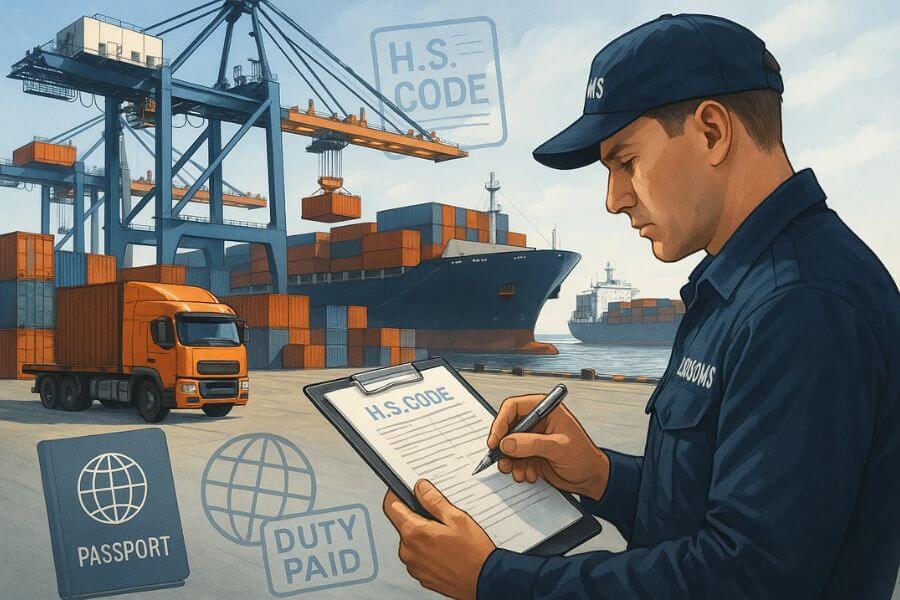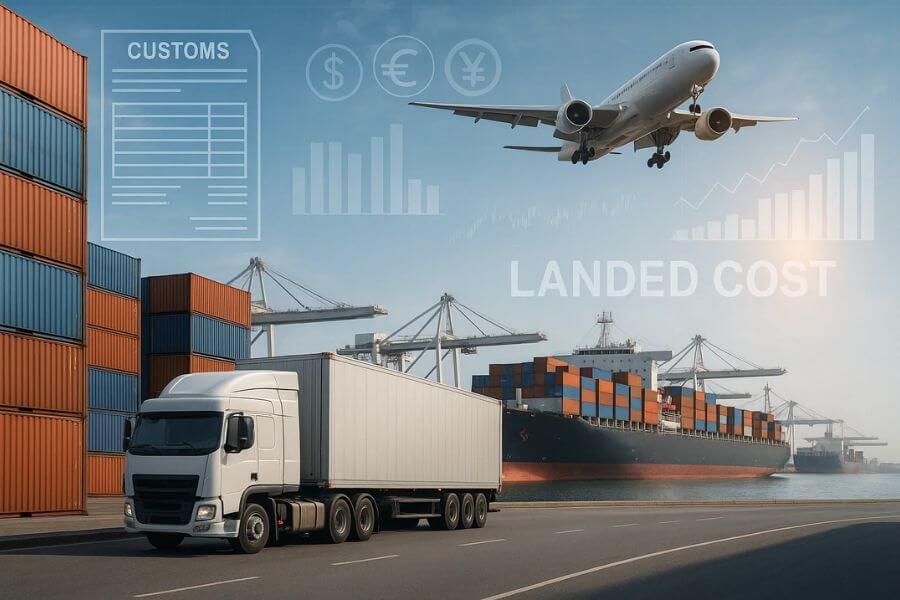If you’re starting an ecommerce business, especially one that involves shipping products internationally, you’ll quickly encounter something called a tariff code. These codes might seem confusing at first, but understanding and using them correctly is essential for smooth shipping, avoiding customs delays, and ensuring you pay the right taxes and duties.
This guide will walk you through everything you need to know about tariff codes-what they are, why they matter, how to find the right ones, and how to use them in your ecommerce business.
What are tariff codes?
Before you can use tariff codes effectively, it’s important to understand what they are and how they work in the world of international trade.
The basics
A tariff code is a numerical code that classifies products for international trade. It’s like a universal language for customs authorities, helping them identify what’s inside a shipment, determine if it’s allowed, and calculate any taxes or duties owed.
You may also hear tariff codes called:
- HS codes (Harmonized System codes)
- HTS codes (Harmonized Tariff Schedule codes)
- Customs codes
- Commodity codes
All of these refer to systems that classify products for import/export.
The harmonized system (HS)
Most countries use the Harmonized System (HS), developed by the World Customs Organization. The HS assigns a 6-digit code to every product type. Countries can then add more digits for even more detail.
For example:
- HS Code: 6403.99 (Footwear, with rubber soles)
- US HTS Code: 6403.99.90.10 (Men’s leather boots)
Why are tariff codes important in ecommerce?
Tariff codes play a crucial role in the ecommerce shipping process, affecting everything from customs clearance to your bottom line.
Smooth customs clearance
Customs authorities use tariff codes to identify your products. If you use the wrong code, your shipment could be delayed, returned, or even confiscated.
Correct duties and taxes
The tariff code determines how much import tax or duty you’ll pay. Using the right code ensures you’re not overpaying (or underpaying, which can lead to fines).
Legal compliance
Incorrect codes can lead to legal trouble, fines, or bans on shipping to certain countries. Getting it right protects your business.
Better customer experience
Delays or unexpected fees can frustrate your customers. Accurate tariff codes help ensure smooth, predictable delivery.
How are tariff codes structured?
To use tariff codes correctly, you’ll need to know how they’re built and what each part of the code means.
The anatomy of a tariff code
Let’s break down a typical tariff code:
- First 2 digits: Product category (e.g., 64 = Footwear)
- Next 2 digits: Product group (e.g., 03 = Leather footwear)
- Next 2 digits: Product sub-group (e.g., 99 = Other)
- Additional digits: Country-specific details (e.g., 90.10 = Men’s boots)
So, a code like 6403.99.90.10 tells customs exactly what your product is.
Examples
- Books: 4901.99
- T-shirts: 6109.10
- Smartphones: 8517.12
How to find the right tariff code
Finding the correct tariff code for your products can seem tricky, but there are practical steps and tools to make the process easier.
Start with the product description
Be as specific as possible. What is the product made of? What is it used for? Who is it for? The more details you have, the easier it is to find the right code.
Use online tools
Many governments and logistics companies offer free tools to help you find tariff codes. Here are some popular ones:
- World Customs Organization HS Database
- US Harmonized Tariff Schedule
- EU TARIC database
- UK Trade Tariff
Ask for help
If you’re unsure, ask your shipping partner, customs broker, or freight forwarder. They deal with tariff codes every day and can help you avoid mistakes.
Double-check for updates
Tariff codes can change as products evolve or trade agreements shift. Always check for the latest codes before shipping.
Common mistakes and how to avoid them
Many beginners make avoidable mistakes with tariff codes; learning about these pitfalls can save you time, money, and frustration.
Using the wrong code
If you guess or use an old code, you risk delays and fines. Always verify the code for each shipment.
Not being specific enough
A vague code can lead to higher duties or shipment holds. Be as detailed as possible about your product.
Ignoring country-specific codes
Some countries add extra digits or have unique requirements. Check the rules for your destination country.
Failing to update codes
Tariff codes can change. Make it a habit to review and update your codes regularly.
How to use tariff codes in your ecommerce business
Once you have the right codes, it’s important to know where and how to use them throughout your ecommerce operations.
On your shipping labels
Most shipping carriers require you to list the tariff code on your shipping label or commercial invoice. This helps customs process your package quickly.
In your ecommerce platform
Many ecommerce platforms (like Shopify, WooCommerce, and BigCommerce) let you add tariff codes to your product listings. This automates paperwork and speeds up fulfillment.
For tax and duty calculations
Some shipping calculators and checkout plugins use tariff codes to estimate taxes and duties for your customers, making pricing more transparent.
Tariff codes and product bundles
Selling product bundles adds complexity to tariff code classification, but there are ways to handle these situations smoothly.
If you sell bundles (e.g., a gift set with a mug, tea, and cookies), you may need to list multiple tariff codes or use a code that best describes the main item. Check with your shipping partner or customs broker for guidance.
Real-world examples of tariff codes
Let’s walk through a practical example to see how a new ecommerce seller navigates tariff codes in real life.
Let’s say you start an online store selling eco-friendly water bottles. You want to ship to customers in the US, UK, and Australia.
- Describe your product: Stainless steel, reusable water bottle, 500ml.
- Search for the HS code: You find 7323.93 (Table, kitchen, or other household articles of stainless steel).
- Check country-specific codes: The US, UK, and Australia all use the same base code, but you check for extra digits just in case.
- Add the code to your shipping label and invoices.
- Your shipment clears customs smoothly!
Frequently asked questions about tariff codes
Q1: Do I need a tariff code for every product?
A1. Yes, every product you ship internationally needs a tariff code.
Q2: What happens if I use the wrong code?
A2. Your shipment could be delayed, returned, or fined. Always double-check your codes.
Q3: Are tariff codes the same in every country?
A3. The first 6 digits (HS code) are the same worldwide. Additional digits may vary by country.
Q4: How often do tariff codes change?
A4. Codes can change every few years. Check for updates regularly.
Q5: Can I get help from my shipping carrier?
A5. Absolutely! Most carriers and customs brokers are happy to help with tariff codes.
Summary
In ecommerce, a tariff code is an internationally recognized number (also called an HS code) used to classify products for customs, helping authorities determine taxes, duties, and regulations when goods are imported or exported across borders.





